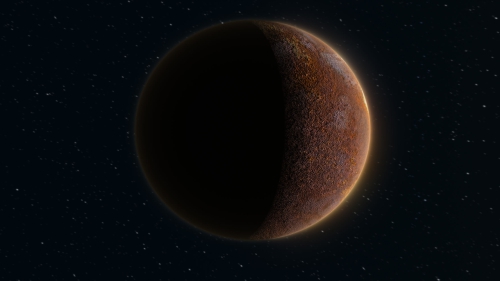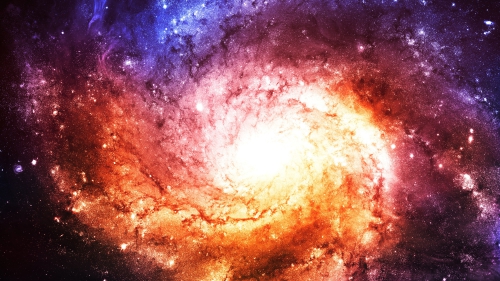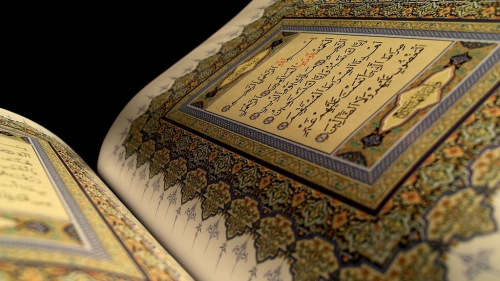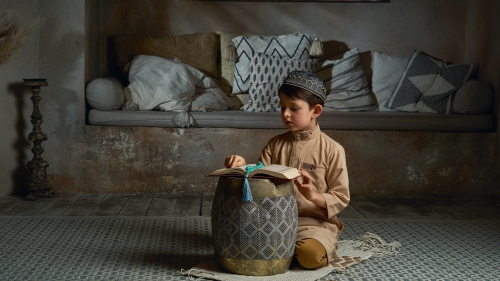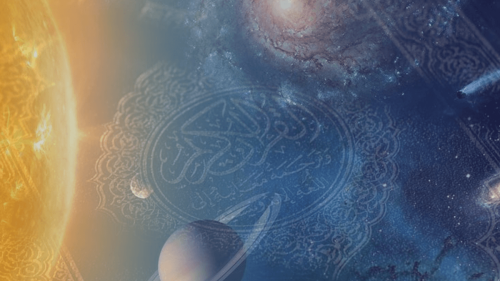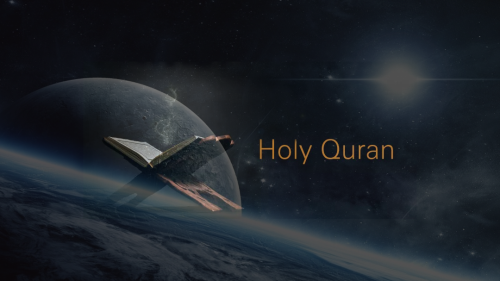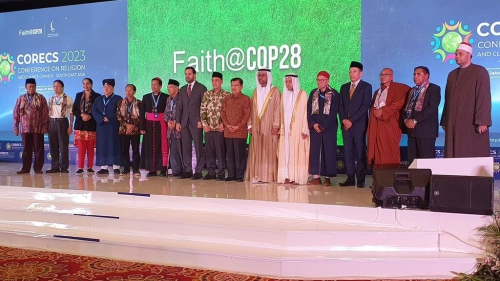The Science of moon-sighting

Most people associate visibility with the age of the moon. Age of the moon is simply the time lapsed since the new moon. It can give a rough approximation for visibility. The visibility depends upon the angular separation of the moon from the sun seen from the earth. As time passes from the instant of the new moon, the angular separation between the sun and the moon increases. This angular separation reflects sun's light to earth. Until this angle becomes 7 degrees, no light of sun reflected by the moon can come to the earth, because of the mountains on the surface of the moon that block the sun light (Danjon 1932). This angle must be about 10-12 degrees from the sun's light to reflect from the moon making a thin crescent that can be sighted.
|
Muslim astronomers in this age of technology are now in a position to calculate the dates for possible/impossible moon-sighting. |
Another important factor is the moon's altitude above horizon. If the crescent thickness is sufficient, but it is not above horizon, then it can not be seen. This happens in the month of September and October in USA, when the moon is in the southern hemisphere, therefore, it can not be seen from northern hemisphere. The moon within the altitude of 10 degrees at sunset is usually not visible.
It is also a scientific fact that, if the moon is visible anywhere on the globe, it would be more easily visible on all places west of it. On the contrary, we hear the news of moon-sighting in Middle East, and on the same evening, here in North America several hours later, it is not visible despite clear horizons. This clearly tells us that what was seen in Middle East could not have been the moon.
Muslim astronomers in this age of technology are now in a position to calculate the dates for possible/impossible moon-sighting. So the validity of sighting claims can be easily verified for authentic moon-sighting. To start an Islamic month correctly, we must examine sighting claims in light of knowledge that Allah has given us. Let us pray to Allah
to open our hearts and minds to understand these facts about moon-sighting.
However, there are several misconceptions about moon-sighting.
Misconception 1: 29th day moon is always thin and 30th day moon is thick.
It is very possible that the 30th day moon of one month is about the same thickness as 29th day moon of another month. The moon revolves around the earth in an elliptical orbit, therefore, sometimes it is closer to the earth and sometimes it is farther from the earth. If the moon is 20 hours old on 29th day of one month when it is closer to the earth, it may look about the same size as, when it is 25 hours old on the 30th day of another month and is farther from earth.
Misconception 2: 29th day moon sets in a short time while 30th day moon remains longer on the horizon.
The moon above the horizon an hour before setting travels down to horizon line along a path whose inclination depends upon the latitude of the observer. A vertically downward path would be an Equator, and a 45 degrees slope at 45 degree latitude. The moon that is 10 degrees above horizon at Equator, would set quicker than a moon that is 10 degrees above horizon at a latitude of 45 degrees. Therefore, it is not correct to say that the 30th day moon remains longer on the horizon. Some months it may be, but not always.
Misconception 3: If the moon is thick and remains on the horizon a long time, it must be the 2nd day moon.
This is very common argument that we hear repeatedly, but has no truth in it. If on the 29th day, the moon at sunset is 18 hours old and is higher above the glare of the sun, it may be visible on that day and will appear to be very thin. However, if the 18 hours old moon on the 29th day is very low on the horizon, it would not be visible on that day, then on the 30th day it would be 42 hours old and quite thick, and remains above the horizon a long time, but it was not visible the day before.
Misconception 4: On New-moon day the dark side of the moon faces earth.
By this sentence, people think that the far side of the moon is dark side of the moon, and that dark side faces us at New-moon day. That is not the case. The same side of the moon always faces the earth, sometimes illuminated, and sometimes dark. The moon takes 27 days, 7 hours and 43 minutes to spin, or rotate, once on its axis. It takes the same amount of time to orbit the earth. The combination of the two motions keeps the same side of the moon facing the earth. To us on earth, the moon is fully illuminated at full moon, completely dark at new moon, and partially lit in between.
Misconception 5: Three consecutive months of 30 days are not possible.
Three consecutive months of 30 days are very possible and are not uncommon. In fact even four consecutive months of 30 days is possible, but rare. This is mainly due to considering the whole USA as one (Matla') horizon. Because of the elliptical orbit of the moon, two consecutive months of 30 days are quite common. In the third month, on the 30th day of previous month, sometimes the moon is only sighted on west coast, because for east coast it may have been 29th day from the actual sighting in east coast. If that is the case then in fourth month the moon may take 29 or 30 days to be visible. In the latter case it would be four months in a row that make 30 days' month. The Committee for Crescent Observation, Ithaca NY has been keeping the records of sighting in North America for the last two decades, and confirms that three consecutive months of 29 days, and four consecutive months of 30 days has occurred several times in USA.
Misconception 6: Full moon occurs on the 14th night.
This is wrong too. Full moon is the instant of time when the moon crosses an imaginary line passing through the centers of the sun and earth. This could happen at any moment of day or night. Therefore, it is very possible that in one month the moon is full at 7:00 a.m. This moon would be 99% lit on the night before and becomes full in the morning, but decreases to 99% lit-up on the following night. Such a moon would appear as a full moon to an observer on both nights. These two nights could be 13th and 14th, or 14th and 15th depending upon the location on earth and the time of new moon birth.
Khalid Shaukat is a consultant to Fiqh Council of North America for moon-sighting and qibla direction issues. He is also a consultant to Islamic Shura Council of North America (that comprises of four major Islamic organizations; ISNA, ICNA, Ministry of W. Deen Mohammad, and Jamaat Community of Imam Jamil Al-Amin). He is also the founder of moonsighting.com
Topics: Islam And Science, Moon, Moonsighting, Nature And Environment
Views: 9784
Related Suggestions
Dr. Khalid's article provides logical explanations to moonsight questions for common inquisitive Muslims, like myself, to understand.
The knowledge, of His creation, that Allah SWT has chosen to provide us should be used to become better Muslims.
The article is providing the basis to strike a balance between traditional 'ruiyah' AND the CRITICAL REQUIEREMENT to validate various moonsighting claims, sometimes by vested parties.
In general, most Muslims are NOT qualified to discuss 'qiblah' or 'ruiyah' issues. We should respect and follow the contemporary 'alims'. NOT to 'blindly' follow misguided political orgs., governments or peoples due to their race or power.
I pray that Allah SWT guide the dogmatic chauvinistic Muslims to TRUE and BECOME GOOD Muslims and NOT be of the 'khasiruun' due to their racist and nationalist positions on such important religious matters.
I once talked to the author and argued about moon sighting. I got his email from moonsighting.com
He disses the "old" version of moon sighting but says his theory is scientific and calculations are CORRECT but they're based on historical sightings of the moon from various places over a long time. Many people use his site to cause diviions and unnecessary problems here in North America. But these people do not see that his calculaitons are based on sightings of the moon by the naked eye...the very same method he is dissing. HOW CONTRADICTORY CAN YOU GET???? Base your calculations on a method to then dismis this very method???
Another factor is I doubt he's got the EXACT measurements to calculate moon sighting. He probably uses a regular calculator and rounds up numbers...even a 0.1 degree error can be significant in some cases and I believe that this is the case here. The moon is quite far and hence if we do not take EXACT measurements ...even the slightest deviation can mislead thousands!!!!! He talks about 7 degrees....maybe in reality it's 6.99 or 7.01 degrees. Ever wonder why even the brightest minds at NASA always change their opinions on various comets and meteors than may hit us one day every now and then. It's not like these people made a mistake...it's the fact that even a very slight change invisible to the naked eye becomes HUGE when it occurs over a large period of time or distance etc.
Geez...How silly was that?
...Insha'Allah this year will go better.
Once again i'm really glad to see this article up here.
Jazak-Allah!
Akbar
directions of qiblah and the date when Ramadan starts at a time
when things are calculated and understood for quite some time
now. Muslims were the first and foremost geographers and
mathematicians, inspired by the God's words in the Holy Quran
about the stars and the shape of the earth. One should not be
uncertain about the day fasting should begin, and there is no
word in the Quran that sighting the moon is a prerequisite for
beginning a particular month. Instead, the Quran mentions that
the moon is a device for keeping track of the months and this is
now accurately timed in a computer.
Once we as a group begin to understand the intentions of our
religion instead of aping interpretations - not by the dear
Prophet but by historians and thinkers that came after - we can
start to unify and become closer together.
The start of Ramadan has become an embarrasing way for
countries and their rulers to bicker, assert and
differentiate themselves from each other, and in turn destroy the
beauty of the faith and the intention.






